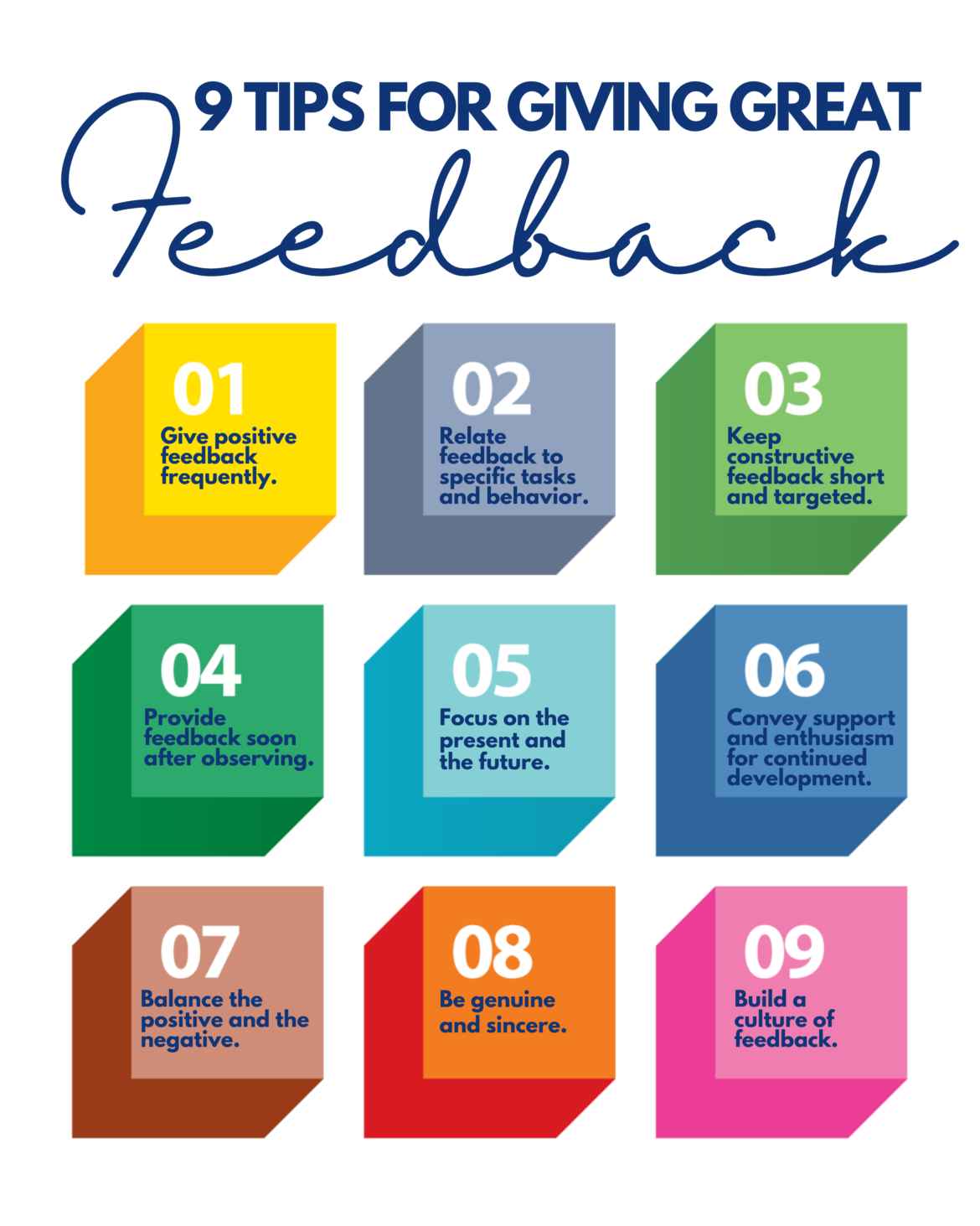There are several ways to give great feedback to your employees, and the right kind can go a long way toward boosting morale. It’s true that morale is a key component of employee engagement, as it reflects a person’s overall attitude towards work, including their level of satisfaction and confidence in their work environment. Good morale is also associated with high productivity, as employees are motivated to do their best. Employees will be more productive and efficient if they feel valued and respected, and these feelings can come if employees are given good feedback often. Let’s look at some helpful tips for giving feedback– both positive and constructive– that will boost morale.
1. Give positive feedback frequently.
This helps to ensure there’s no recency bias. According to a recent study, 82% of employees who receive weekly one-on-ones feel they get the support they need while 66% of employees who receive less frequent meetings report feeling supported. To make the most of this type of feedback, managers must frequently communicate with their direct reports and teams.
2. Relate it to the specific tasks and behavior.
Don’t give feedback that repeats common knowledge. Relate it directly to the observable work and performance of the employee. Accompany it with concrete examples of the behavior that you want to see from the employee, and give constructive feedback with empathy. Similarly, being specific and giving examples with your positive feedback shows you value employees and pay attention.
3. Keep constructive feedback short and targeted.
If it is too long, vague, or ambiguous, employees may not understand it. Feedback should be straightforward and targeted to specific goals. Provide information on what you’ve observed, and write down examples to help employees understand your feedback and give examples of your own success with a particular task, project, or initiative.
4. Give feedback soon after observing.
Employees need to know what they did and how it relates to the expectation in order to prevent any future incidents (if constructive) or to continue with a behavior (if positive). When giving constructive feedback, don’t wait for weeks. Instead, provide feedback right away. This will help reduce the likelihood of any future problems.
5. Focus on the present and the future.
For example, if an employee consistently misses deadlines, you must determine why and how to prevent missed deadlines in the future. Perhaps you can delegate tasks or break down milestones into smaller steps. Generating a plan of action in collaboration with the employee can help set them up for success and ensure they feel supported along the way.
6. Convey your support and enthusiasm for continued development.
Whether you’re providing positive or constructive feedback, make sure to focus on specifically what you would like to address. Then, reiterate your support and desire for your employee’s success. If they’ve grown, show that you’ve taken notice of the growth and highlight it. If there’s an area of growth being addressed, express your confidence in their growth.
7. Balance the positive and the negative.
Before giving feedback to employees, it is necessary to identify the performance areas and balance positive and constructive feedback. Make notes on the order of your feedback so that you will have an easy time structuring it or use an employee evaluation form to keep it focused.
8. Be genuine and sincere.
When giving great feedback to your employees, make it genuine and be empathetic. It’s important to avoid over-praising because it sounds hollow and lacks constructive value. Avoid giving praise for everyday activities. Save such praise for real victories. This way, they’ll feel seen and it will act as reinforcement for successful behaviors.
9. Build a culture of feedback.
In order to build a culture of giving great feedback to your employees, you must give your staff ample opportunities to give and receive it. These conversations are essential for fostering open communication and a culture of openness. Employees need to feel comfortable sharing ideas and opinions, and they need to feel appreciated for doing so. Although giving feedback is not always easy, it will go a long way in promoting an open atmosphere.
To create a culture of feedback, ensure that everyone is aware of the importance of the practice. Employee engagement is an important component of organizational success, and an engaged workforce is more efficient and loyal. According to McKinsey Global Institute, employees who are engaged in their work are between 15 and 20% more productive than those who are disengaged. In fact, teams that are highly engaged in their work are 21% more productive.
It is also important to ensure that the process of giving feedback is seamless for all employees. Employees should feel comfortable giving and receiving it, and this process should be seamless and easy for them to follow. It also helps to have a feedback checkpoint to ensure that the process is followed correctly. By establishing these guidelines, you will be able to create a culture of giving great feedback to employees that is both fair and effective.
Have you experienced a time when you received feedback from a supervisor that was helpful and positive? What did the supervisor do to make it such? Drop a line in the comments to let us know.

